Related Research Articles

A needlework sampler is a piece of embroidery or cross-stitching produced as a 'specimen of achievement', demonstration or a test of skill in needlework. It often includes the alphabet, figures, motifs, decorative borders and sometimes the name of the person who embroidered it and the date. The word sampler is derived from the Latin exemplum, which means 'example'.

Drawn thread work is one of the earliest forms of open work embroidery, and has been worked throughout Europe. Originally it was often used for ecclesiastical items and to ornament shrouds. It is a form of counted-thread embroidery based on removing threads from the warp and/or the weft of a piece of even-weave fabric. The remaining threads are grouped or bundled together into a variety of patterns. The more elaborate styles of drawn thread work use a variety of other stitches and techniques, but the drawn thread parts are their most distinctive element. It is also grouped with whitework embroidery because it was traditionally done in white thread on white fabric and is often combined with other whitework techniques.

A shawl is a simple item of clothing, loosely worn over the shoulders, upper body and arms, and sometimes also over the head. It is usually a rectangular piece of cloth, but can also be square or triangular in shape. Other shapes include oblong shawls. It is associated with the inhabitants of the northern Indian subcontinent—particularly Kashmir and Punjab—and Central Asia, but can be found in many other parts of the world.

Zari is an even thread traditionally made of fine gold or silver used in traditional Indian, Bangladeshi and Pakistani garments, especially as brocade in saris etc. This thread is woven into fabrics, primarily silk, to make intricate patterns and elaborate designs of embroidery called zardozi. Zari was popularised during the Moghul era; the port of Surat was linked to the Meccan pilgrimage route which served as a major factor for re-introducing this ancient craft in India.

Darning is a sewing technique for repairing holes or worn areas in fabric or knitting using needle and thread alone. It is often done by hand, but using a sewing machine is also possible. Hand darning employs the darning stitch, a simple running stitch in which the thread is "woven" in rows along the grain of the fabric, with the stitcher reversing direction at the end of each row, and then filling in the framework thus created, as if weaving. Darning is a traditional method for repairing fabric damage or holes that do not run along a seam, and where patching is impractical or would create discomfort for the wearer, such as on the heel of a sock.

Kiswa is the cloth that covers the Kaaba in Mecca, Saudi Arabia. It is draped annually on the 9th day of the month of Dhu al-Hijjah, the day pilgrims leave for the plains of Mount Arafat during the Hajj. A procession traditionally accompanies the kiswa to Mecca, a tradition dating back to the 12th century. The term kiswa has multiple translations, with common ones being 'robe' or 'garment'. Due to the iconic designs and the quality of materials used in creating the kiswa, it is considered one of the most sacred objects in Islamic art, ritual, and worship.

Armenian needlelace is a pure form of needle lace made using only a needle, thread and pair of scissors.
Filet lace is the general word used for all the different techniques of embroidery on knotted net. It is a hand made needlework created by weaving or embroidery using a long blunt needle and a thread on a ground of knotted net lace or filet work made of square or diagonal meshes of the same sizes or of different sizes. Lacis uses the same technique but is made on a ground of leno or small canvas.
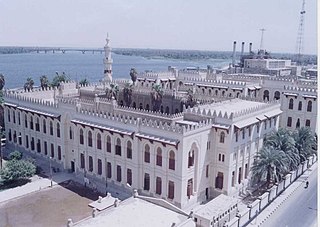
Asyut is the capital of the modern Asyut Governorate in Egypt. It was built close to the ancient city of the same name, which is situated nearby. The modern city is located at 27°11′00″N31°10′00″E, while the ancient city is located at 27°10′00″N31°08′00″E. The city is home to one of the largest Coptic Catholic churches in the country.
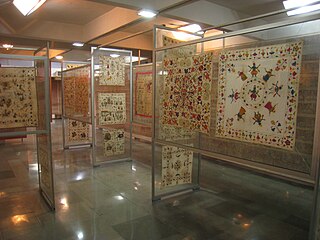
Embroidery in India includes dozens of embroidery styles that vary by region and clothing styles. Designs in Indian embroidery are formed on the basis of the texture and the design of the fabric and the stitch. The dot and the alternate dot, the circle, the square, the triangle, and permutations and combinations of these constitute the design.
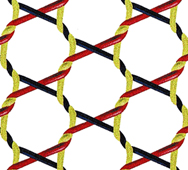
Bobbinet tulle or genuine tulle is a specific type of tulle which has been made in the United Kingdom since the invention of the bobbinet machine. John Heathcoat coined the term "bobbin net", or bobbinet as it is spelled today, to distinguish this machine-made tulle from the handmade "pillow lace", produced using a lace pillow to create bobbin lace. Machines based on his original designs are still in operation today producing fabrics in Perry Street, Chard, Somerset, UK.
The manufacture of textiles is one of the oldest of human technologies. To make textiles, the first requirement is a source of fiber from which a yarn can be made, primarily by spinning. The yarn is processed by knitting or weaving, which turns yarn into cloth. The machine used for weaving is the loom. For decoration, the process of colouring yarn or the finished material is dyeing. For more information of the various steps, see textile manufacturing.

Net or netting is any textile in which the yarns are fused, looped or knotted at their intersections, resulting in a fabric with open spaces between the yarns. Net has many uses, and comes in different varieties. Depending on the type of yarn or filament that is used to make up the textile, its characteristics can vary from durable to not durable.
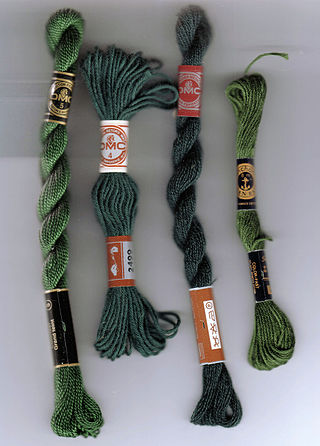
Embroidery thread is yarn that is manufactured or hand-spun specifically for embroidery and other forms of needlework. Embroidery thread often differs widely, coming in many different fiber types, colors and weights.

Goldwork is the art of embroidery using metal threads. It is particularly prized for the way light plays on it. The term "goldwork" is used even when the threads are imitation gold, silver, or copper. The metal wires used to make the threads have never been entirely gold; they have always been gold-coated silver or cheaper metals, and even then the "gold" often contains a very low percent of real gold. Most metal threads are available in silver and sometimes copper as well as gold; some are available in colors as well.

English embroidery includes embroidery worked in England or by English people abroad from Anglo-Saxon times to the present day. The oldest surviving English embroideries include items from the early 10th century preserved in Durham Cathedral and the 11th century Bayeux Tapestry, if it was worked in England. The professional workshops of Medieval England created rich embroidery in metal thread and silk for ecclesiastical and secular uses. This style was called Opus Anglicanum or "English work", and was famous throughout Europe.

Embroidery was an important art in the Islamic world from the beginning of Islam until the Industrial Revolution disrupted traditional ways of life.
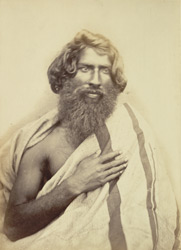
The Toda Embroidery, also locally known as "pukhoor", is an art work among the Toda pastoral people of Nilgiris, in Tamil Nadu, made exclusively by their women. The embroidery, which has a fine finish, appears like a woven cloth but is made with use of red and black threads with a white cotton cloth background. Both sides of the embroidered fabric are usable and the Toda people are proud of this heritage. Both men and women adorn themselves with the embroidered cloaks and shawls.

Manus x Machina: Fashion in an Age of Technology was an exhibition at the Metropolitan Museum of Art that showcased the dichotomy between Manus, also known as haute couture, and Machina, also known as prêt-à-porter. The Metropolitan Museum of Art debuted this exhibition during the 2016 Met Gala and ran it from May 5, 2016 to September 5, 2016. It included over 120 pieces from designers like Chanel and Christian Dior, varying from the 20th Century to present day.

Volhynian folk costume is a type of Ukrainian national clothing worn in Volhynia. The costume includes Polesia influences such as colourful ochipoks, fitted corset-like waistcoats and striped skirts, as well as Dnieper Ukraine: namitka headscarfs, kersetka vests and dark skirts.
References
- ↑ Elnashar, Elsayed; Yoakim, Jakleen Boshra; Abdelmaged Shoman, Masoud Fathy (2014). "UTILIZATION OF AESTHETICS VALUE OF TALLY WOVEN FABRIC STRUCTURES IN FASHION TRENDS" (PDF). Applied Researches in Technics, Technologies, and Education (ARTTE). 2 (4): 318. Retrieved September 10, 2019.
- ↑ Adum, Priscilla. "Assuit (Tulle Bitalli) Fabric - An Egyptian Textile Art". www.shira.net. Retrieved September 17, 2019.
- ↑ Ornament. Ornament. 1989.
- ↑ "Plate application - RSN StitchBank". rsnstitchbank.org. Retrieved 2024-05-10.
- ↑ Cooper, Elizabeth (1914). The Women of Egypt. Hurst & Blackett.